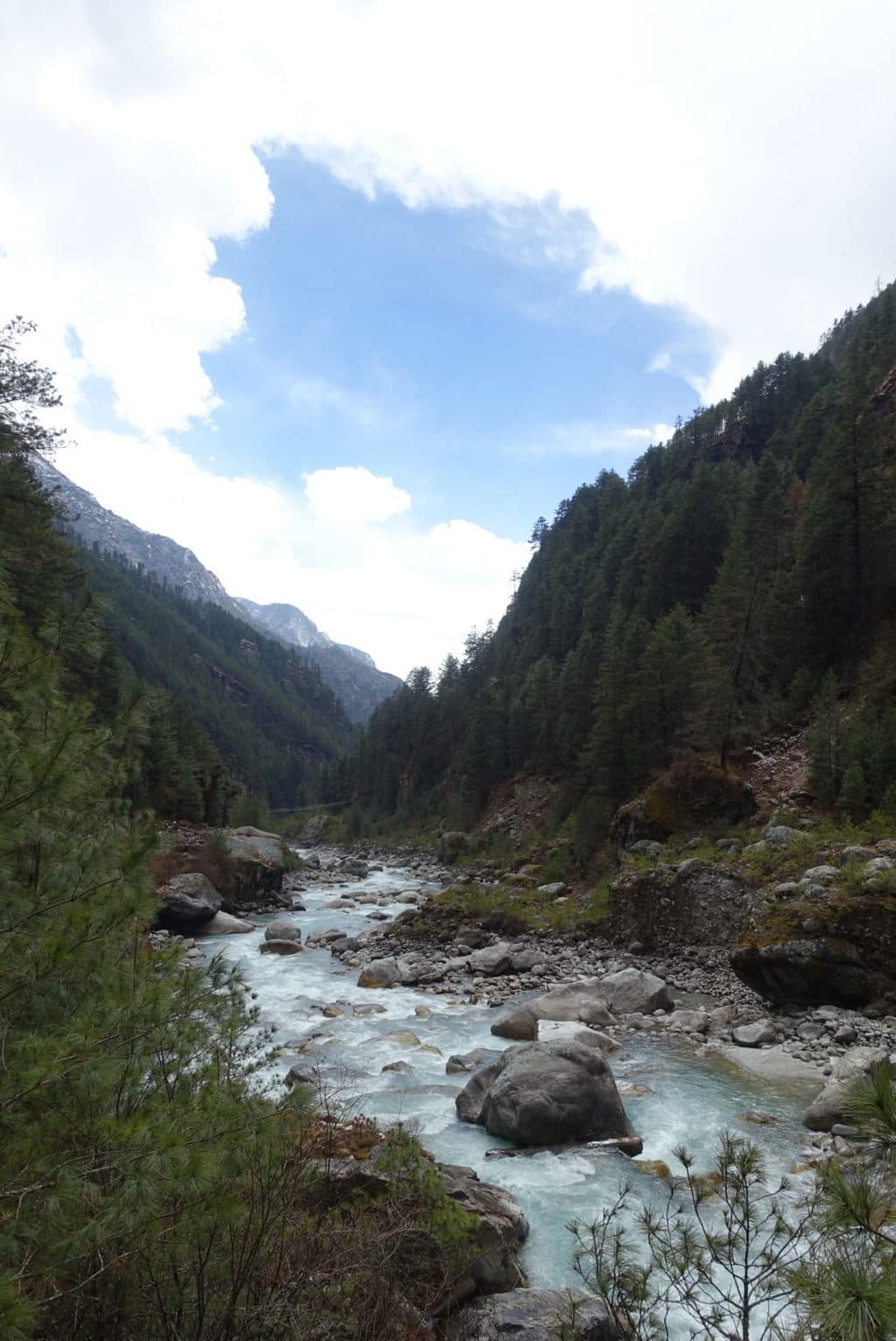Ever since we began thinking about our world trip, the Himalayas were always on the wish list. I just didn’t want to pass up an opportunity to visit the mountain range that is home to all 14 of the world’s “eight-thousanders”, or mountains that rise above 8,000 meters. Since Kathy is from a mountainous country herself, it wasn’t too hard to convince her that we needed to go trekking into the Himalayas!
After doing a bit of research, we decided to try our hand at the Everest Base Camp trek. I mean, when you head to the himalayas, you might as well and try to tackle the big one first right?? We are reasonable fit folks who do a fair bit of hiking so we thought that we’d be able to handle the prolonged physical strain of this trek. To be honest though, we weren’t entirely prepared for some of the difficulties of high-altitude trekking. (I don’t think anyone truly understands this until first experiencing it though)
So with our minds made up, the three of us (Karen, Kathy, and myself) climbed aboard a small 15 seat plane at Kathmandu airport with our guide and headed for the small town of Lukla, Nepal. When we first booked this short flight, the name of the small town seemed oddly familiar. After doing a quick google search I found out why Lukla had rung a bell. Lukla’s airport (named Tenzing-Hillary airport after the first mountaineers to climb Mt. Everest) is regarded as the most dangerous in the world and was even featured in the History Channel’s “most extreme airports” program earning spot #1. It owes this reputation to it’s very unorthodox runway, which sits on a 12% gradient, literally on the side of a mountain. One end of the runway drops off a cliff, while the other end is blocked by the rising mountain. No room for mistakes at this airport! Thankfully the flight and landing for us were routine, but it still made for quite the interesting flying experience!
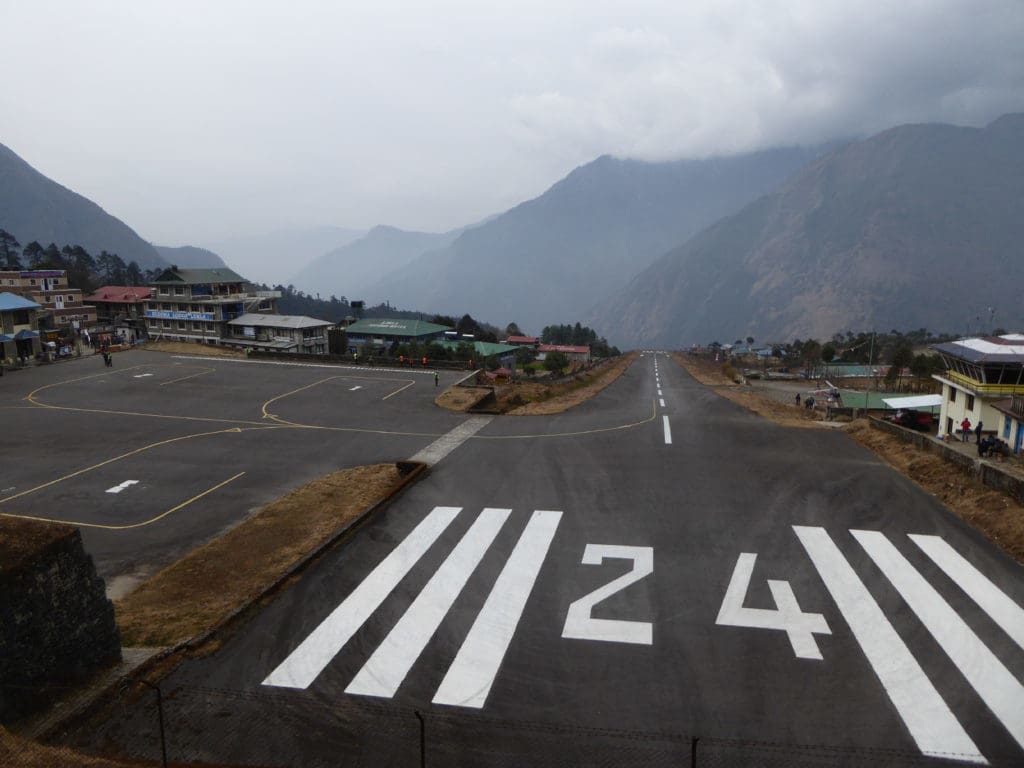

After leaving the airport we headed to our first teahouse to get some breakfast. Teahouses are essentially guest lodges that serve local dishes, and yes, all types of tea. They reminded me of the ski lodges you’d find in the Alps, just much more basic. After fueling up at the teahouse in Lukla, we headed out into the cold rain and began the first part of our journey along the Everest base camp trail towards the town of Phakding. Our spirits were still quite high here at the beginning of our journey, so we didn’t find the wind, rain, and snow to be a hindrance and in fact actually enjoyed trekking through it. The word Himalaya means “abode of snow” after all, so it seemed rather fitting that our first day was full of it!
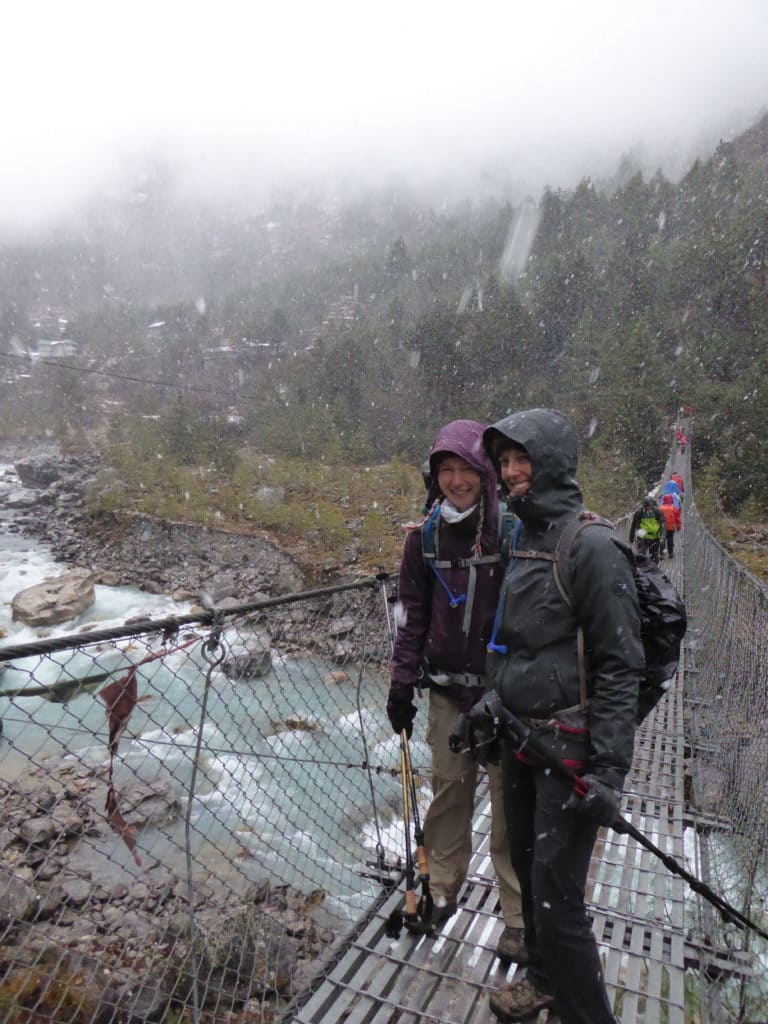
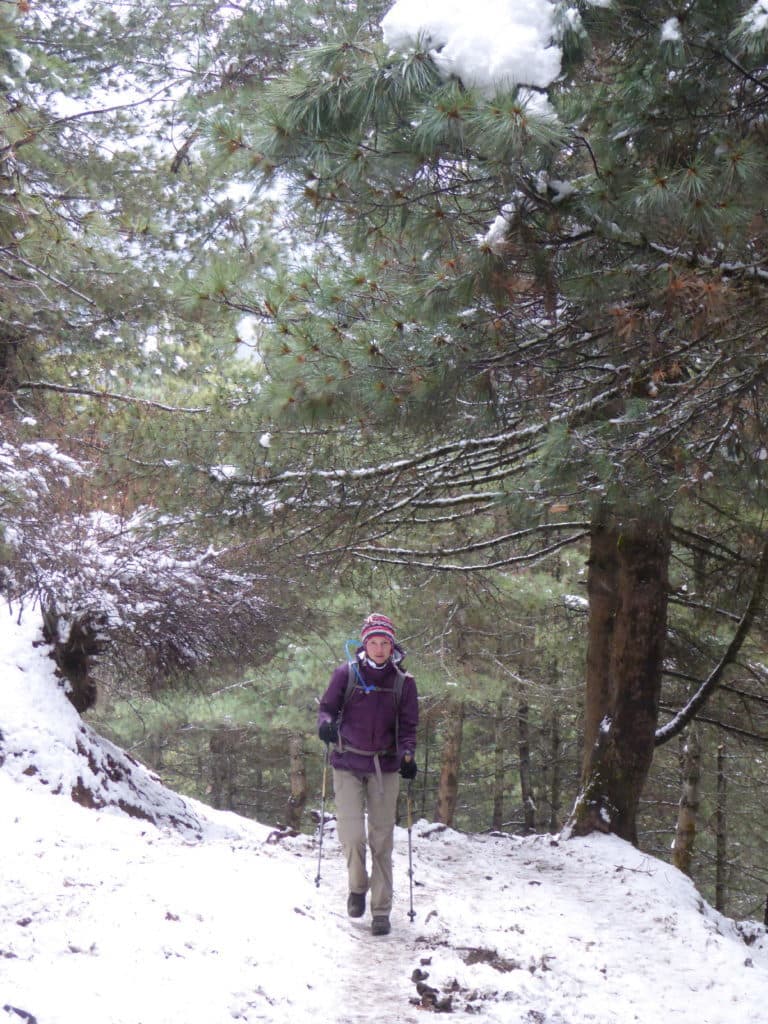
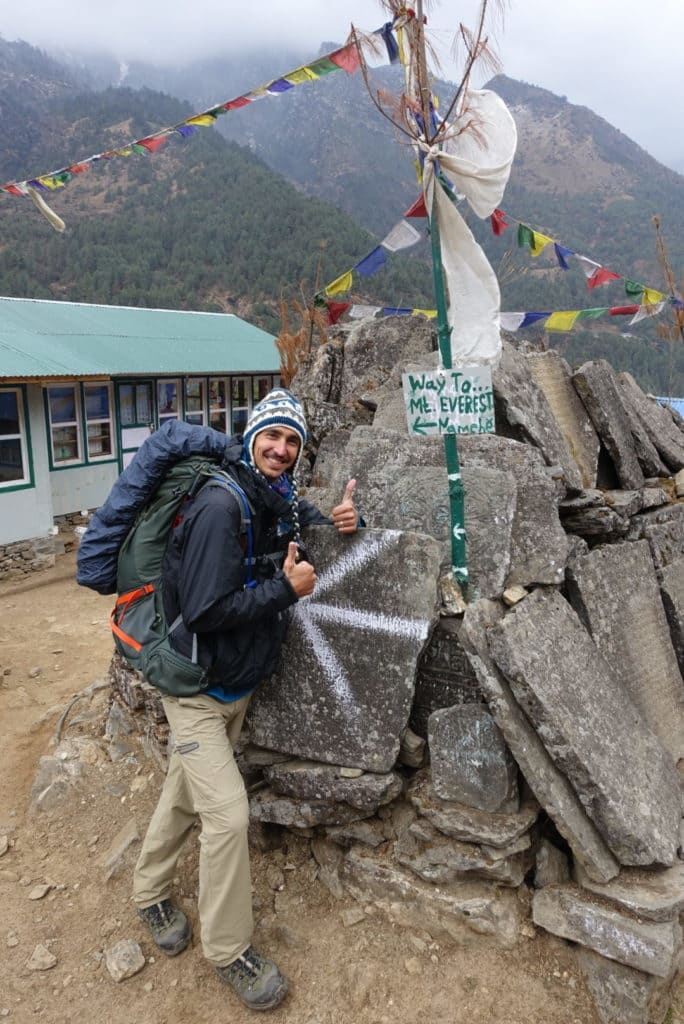
It is hard to describe the beauty of the Khumbu valley region. We would literally stop every few minutes and just stare at the pine covered hillsides and the mountains rising up over the valley. As our gaze would fall back down, we’d see the boulder strewn river flowing with ice-cold turqoise blue glacier water. Add on top of this the fact that there are no roads or vehicles of any kind within 50 miles, and you have the definion of tranquil beauty. This combination of magnificent views, sweet smelling pine, and quiet nature was the exact reason why we wanted to come to Nepal. It was a break from civilization.

After spending a night in Phakding, we continued our trek towards Namche Bazaar, the first (and only) “big” town along the trek. It is home to roughly 1,500 people and is situated at 3,400m/11,200ft on the slopes of a bowl shaped hill looking towards Kongdi Ri mountain. If there was a contest for most epic setting for a small town, Namche Bazaar would be in the running for the crown. Getting to the town is no small feat, however. We had to walk from the valley floor (about 2,600m/8500ft) all the way up to Namche at 3,400m/11,200ft in about 4 hours. This 800m/2,700ft vertical gain is accomplished by climbing up to, and then crossing, a cable-bridge suspended 200m/650ft above the valley floor, and then switch-backing up the mountain until you arrive in town. Climbing this type of hill at sea-level is already quite the workout, but add in the fact that at this altitude oxygen is already down to 65% of normal levels, and you can imagine how exhausted we were by the time we rolled in!
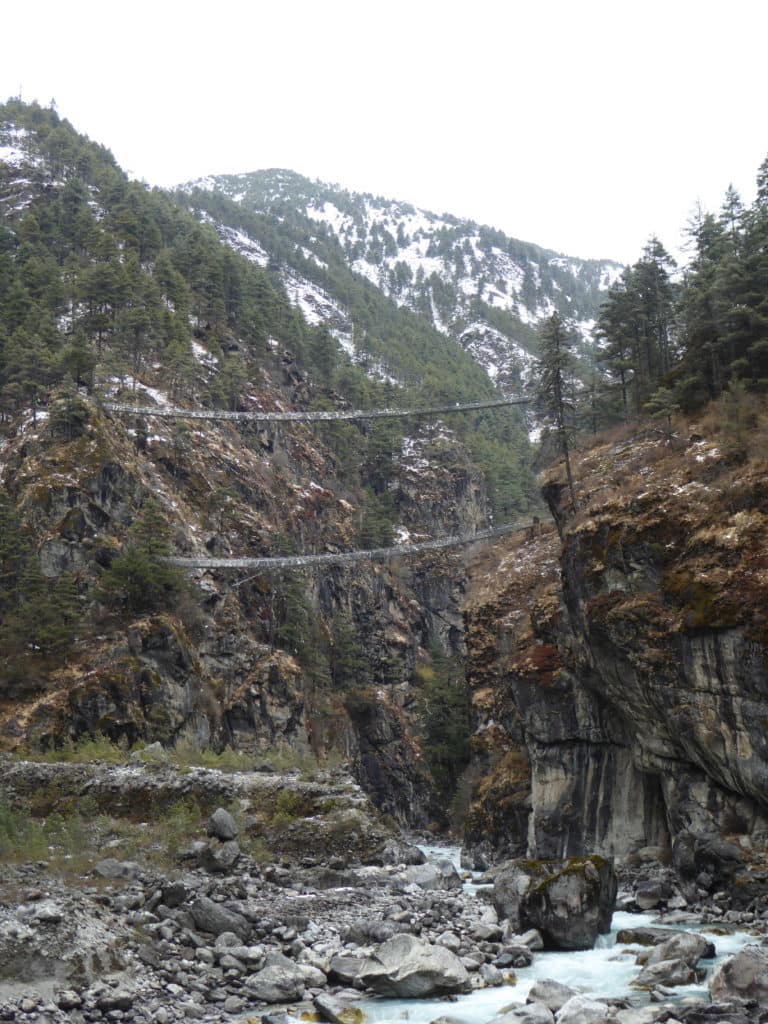
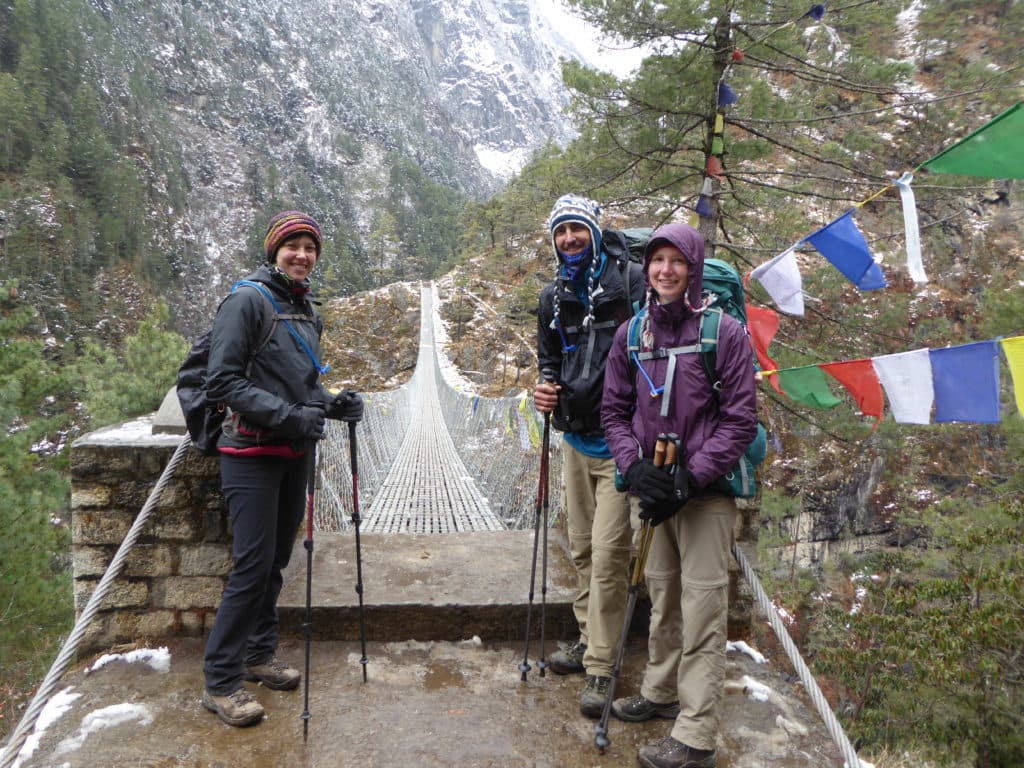

Once in town, we settled down into a room at the Green Tara Hotel Lodge. Due to the increase in altitude, we planned to spend two days in Namche to acclimate properly. When trekking at high-altitude, the length and duration you walk during the days is actually much less important than how much you’ve ascended. The general rule is to sleep no higher than 500m/1,640ft above where you slept the previous night, and to take at least 1 acclimation day for every 1000m/3,300ft ascended. Your body begins to make up for the lack of oxygen at high altitude by increasing red-blood cell count, heart rate, and respiration rate among other things. These rules and acclimation days are meant to give your body time to catch up to the increase in altitude so you don’t succumb to altitude sickness (which is essentially caused by a lack of oxygen to the vital organs).

So, we had read about the effects of high-altitude on the body, but now we were finally in a location of high-altitude to experience it first hand. We thought we knew what it would be like, but honestly, we were quite surprised by the effects it had on us. That first night in Namche Bazaar was terrible. Not a single one of us was able to sleep through the night. We would fall asleep for 10-20 minutes at a time only to wake ourselves up gasping for breath. When I say gasping for breath I mean it literally, for we would sit up in bed and suck air for 2-3 minutes before feeling like it was ok to lie back down. It was a rather disturbing experience. (this is known as periodic breathing, and is actually a very common but minor symptom of altitude sickness). The next day, we hiked up above Namche Bazaar to a viewpoint, hoping to catch our first glimpse of Everest (it was cloudy, unfortunately). Again, the elevation hit us quite hard. We would walk for 20-30 seconds before we’d be forced to stop to catch our breath. It became very difficult to drink water and walk at the same time. We found ourselves taking water breaks every couple of minutes. One positive note about this I suppose, is that every time we had to stop to catch our breath, we were treated to some of the most amazing views in this world! After having some tea at the Everest View Hotel we descended back down to Namche for our second night. This night was actually much better than the first as our bodies had already adjusted a little bit to the altitude. It still wasn’t the best sleep (to be honest, we never had good sleep the whole trek), but we were at least able to sleep through most of the night without waking up gasping for air. Before leaving Namche we made sure to grab a few extra layers of warm clothing, since it was much colder than it was supposed to be and we weren’t quite comfortable in the clothes we brought. So, we did a bit of shopping and picked up some more knock-off clothing to keep ourselves a bit warmer in the face of that brutally cold himalayan wind!
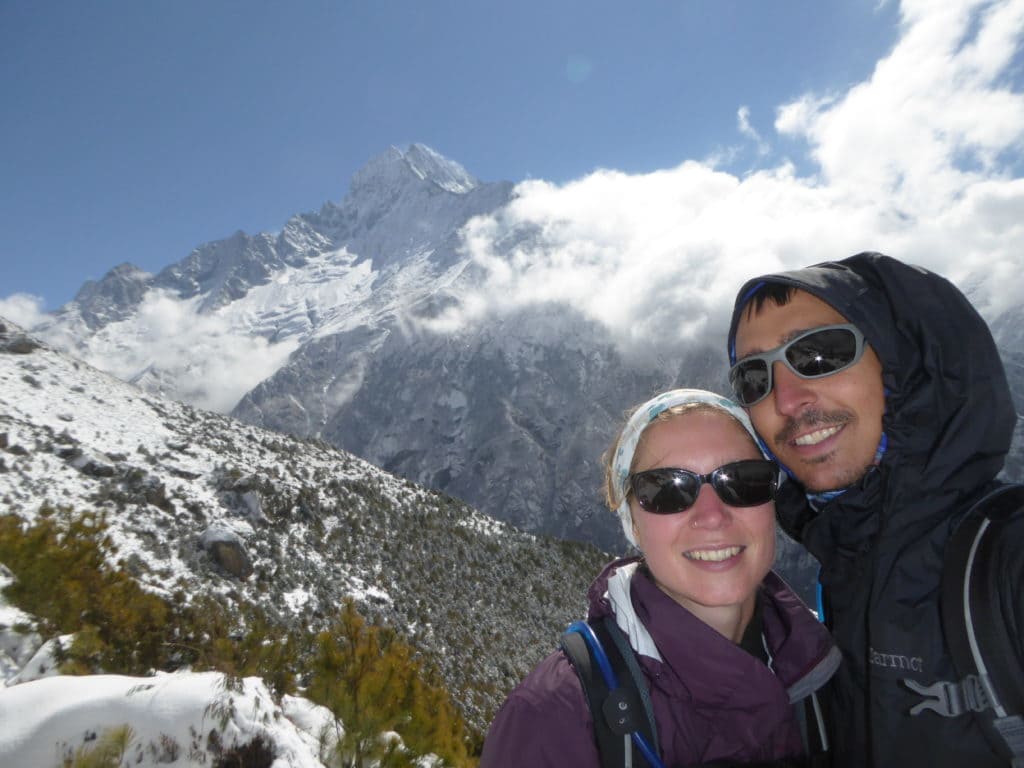
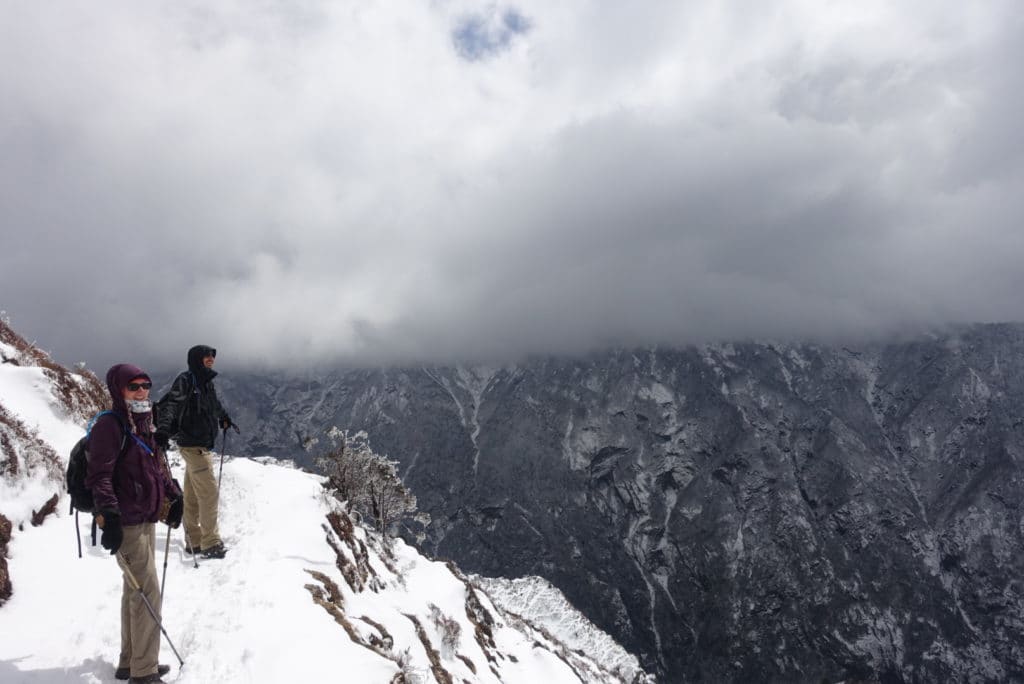
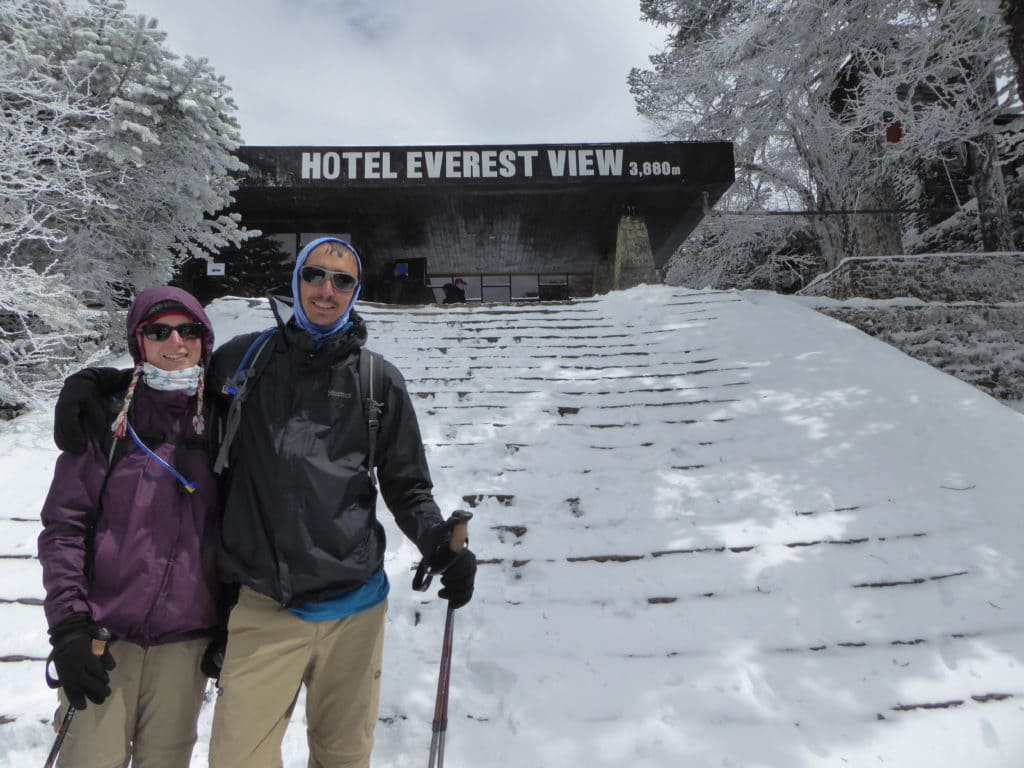
From Namche Bazaar, we made our way to a small little town perched on a mountain-top named Tengboche located at 3,900m/12,800ft. The trek between these two towns was probably one of our favorite of the whole trip. It had similar views to what I described earlier, but the main difference is that we were seeing it from high on the ridge of a mountainside which gave us a birds-eye view the extended as far as we could see down the valley. It was also the first day that we spotted Mt. Everest! We were quite lucky because the weather that day was utterly gorgeous which made us even more excited to be trekking in the himalayas with views of the world’s tallest mountain!


It also seems fitting to end this post right here. What better place to stop than the place where we first saw Everest!?
I’ll pick up the story with the next post…

